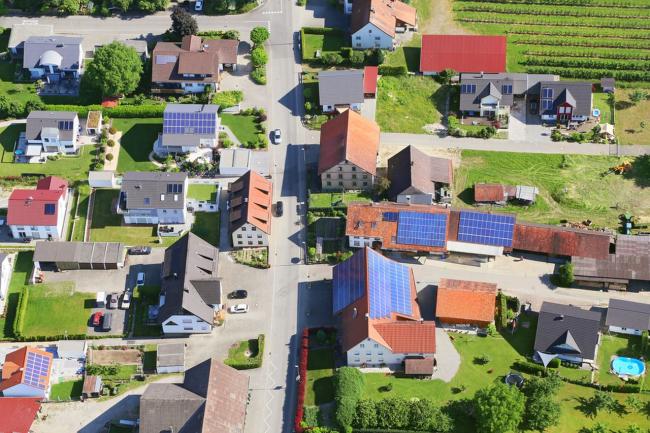Articles Menu

Rooftop solar is expanding rapidly in the United States — by some estimates, a new system goes up every four minutes. There are plenty of reasons for that, from falling prices to generous federal subsidies to innovative leasing schemes.
But there's another, little-discussed factor here: Residential solar power is contagious. Yep, contagious. Studies have found that if you install solar photovoltaic panels on your roof, that increases the odds that your neighbors will install their own panels.
SolarCity has also made some neat animations showing the "contagion" effect in action. Here's Fort Collins and nearby Greeley, Colorado. The yellow dots show customers that came to SolarCity for installations. The green dots show installations that came about due to referrals:
(SolarCity)Here's an animation of rooftop solar going viral in Honolulu. As you can see, an initial wave of yellow dots usually brings a follow-up cluster of green referrals:
Finally, here's a map of the cities where the contagion effect is most pronounced. In Fort Collins, fully 69 percent of SolarCity's installations came from referrals.
Obviously SolarCity has a vested interest in promoting the idea of solar "contagion." But it's not the only one. Independent academics have been tracking this phenomenon for years.
/cdn0.vox-cdn.com/uploads/chorus_asset/file/6436301/Screen_Shot_2014-10-24_at_1.39.23_PM.0.png) (Graziano and Gillingham, 2014)
(Graziano and Gillingham, 2014)
The researchers, Marcello Graziano of the University of Connecticut and Kenneth Gillingham of Yale, tried to figure out why solar power would expand in this way. Maybe solar power was just concentrating in large population centers? Nope: In fact, solar power was growing more rapidly in small and medium population areas. Nor was solar power simply proliferating in the rich parts of the state; households of all income levels were adopting solar power.
After more careful examination, the researchers concluded that the evidence points to something called "neighbor effects." Specifically, adding one rooftop system on a block increased the average number of installations within a half-mile radius by 0.44. This built on previous research finding similar effects in California.
Solar contagion makes some intuitive sense: Most people still don't know very much about residential solar power, how the subsidies work, or whether it makes financial sense. The technology is still new. But if they see that their neighbor is putting up panels, suddenly the possibility becomes more concrete. You can talk to the neighbors, find out more, think about whether it makes sense for you.
It's also possible there's a competition effect — green-minded households don't want to be one-upped by their neighbors installing panels. So they go buy their own.
SolarCity, for its part, also offers added financial incentives to get people to promote rooftop solar. Under its Solar Ambassador program, rooftop owners can get $200 for every new customer they refer, and the referred customer gets one month of solar electricity free.
Now, granted, neighborhood effects are hardly the only reason solar power is spreading. In Connecticut, for instance, the state began offering financial incentives for people who installed rooftop systems in 2005. Crucially, the state also has very high electricity costs (which means that solar panels make more sense for some people). Connecticut also had a number of "Solarize" programs, which began in 2012 and let towns engage in "group pricing" — essentially allowing communities to buy in bulk. Those programs were very good at spreading word of mouth.
But neighbor effects — the contagious aspect — seem to be very important, and they've been seen in other places, as well, including Austin, Texas, and all across California.
Solar analysts have suggested that this bodes well for the future of the technology. In a interview last year, Shayle Kann, senior vice president of GTM Research, told me that one of the biggest costs for solar installers was simply finding new customers. Companies like SolarCity — which allow people to lease panels for no upfront cost and pay monthly fees — typically camp out at places like Home Depot.
But as solar power grows, word of mouth spreads, and referrals increase, those sign-up costs should come down. And, indeed, this reduction in "balance of systems" costs — all the costs of solar power that aren't the panels themselves — is a big reason the price of solar power keeps declining.